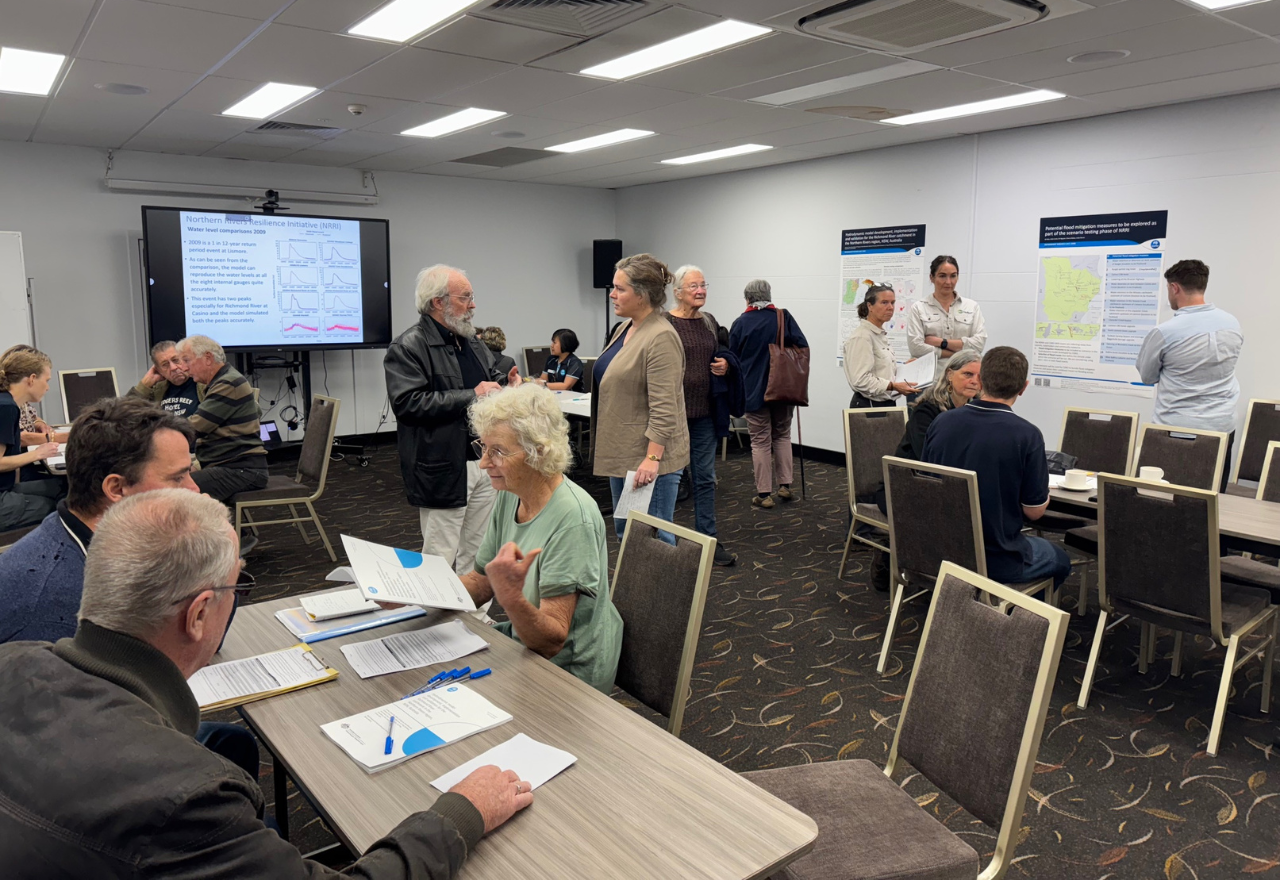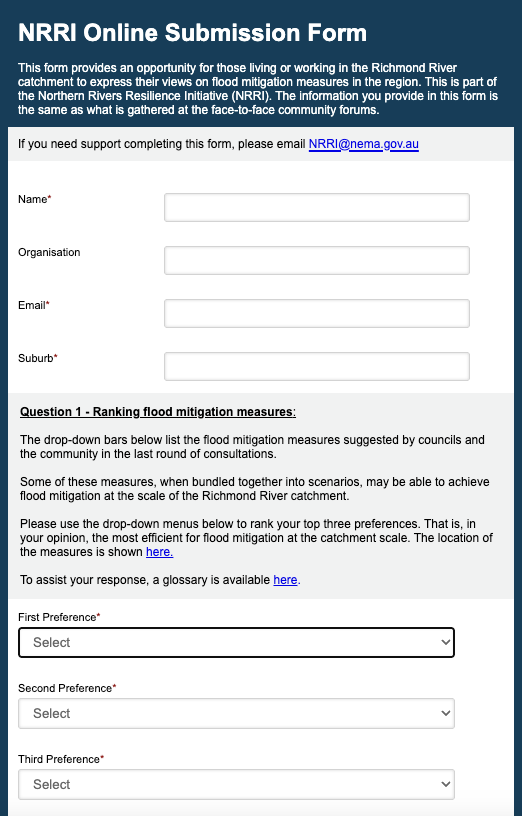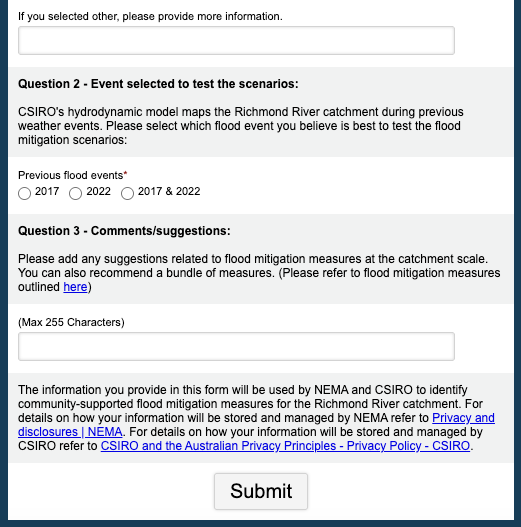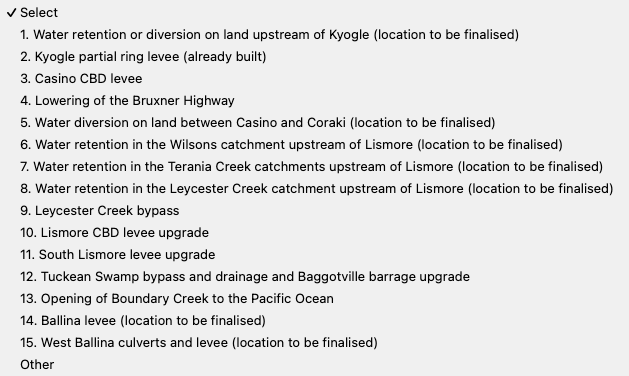CSIRO community vists are done: what are the next steps?
Simon Mumford
10 August 2025, 8:00 PM
 Inside the NRRI community forum during the Lismore session
Inside the NRRI community forum during the Lismore sessionThe Northern Rivers Resilience Initiative (NRRI) Community Forums, run by the CSIRO and NEMA, finished up on Friday at Kyogle. That gave CSIRO lead scientist Jai Vaze and his team forty hours of collected data to take back to Canberra and collate before returning to Lismore and the Northern Rivers to present two or three flood modelling options.
As you would expect, the area hit hardest by the 2022 big flood had the most people turn up. Lismore had a queue of about 30 people before the doors opened at 10am last Monday at the Workers Club. At the end of the day, around 250 people spoke with representatives and then completed a form, which was handed in to the staff. Other approximate numbers were Casino 40, Ballina 125, Woodburn 100 and Kyogle 40.
Round two of the community consultation process started with suggestions from the first round of consultation, in which 36 flood resilient measures were funded out of the $150 million NRRI, like the Browns Creek pump upgrades, clearing drains and upgrading Fishery Creek and Canal Bridge in Ballina to four lanes.
From those meetings, several other suggestions were made that would require substantial funding that was well above the $150 million budget and needed to be tested using a proper flood model.
"So, we put 15 of those on a sheet. As we have explained, these are not CSIRO suggestions; they are not NEMA (National Emergency Management Agency) suggestions; these were what came from the community and the councils. We brought these as a starting point."
"If people think any of these are good, you give them number one. If you think a bundle of them, like one, plus three, plus seven, plus nine, plus 11, is a better option, you put that as a bundle, as your suggestion. There was a box below where you could put your suggestions. There was another space if people had a separate suggestion. They could write whatever they wanted.
There was concern that the community process could be influenced by various groups to further their own interests, such as taking a blank sheet from the room in the Workers Club and photocopying it, then submitting a bundle of completed forms. Jai explained that the number of people who turned up for the community consultations would equal the number of forms handed in.
"If sheets came later, then we cannot take them because they were not taken by us," Jai said.
There is also the opportunity for the community to give their thoughts online until August 15 2025.


When you click on the dropdown box, the 15 options appear.

The only difference is that you don't get to talk to a CSIRO team member.
You will notice there are no nature-based suggestions on the CSIRO sheet. Jai explained that this was deliberate.
"Some people are asking for nature-based solutions, but there are no nature-based solutions there because the two that were given to us before have already been funded through the $150 million NRRI project.
"As we have said right from the beginning, everything is on the table, whatever the community says, we will do if it makes sense to do for large floods, because the main terms of reference we have is to look for flood mitigation scenarios for large floods. For example, for Lismore 2017 and 2022.
"I, as a flood modeller, and my other modelling experts, will look at it, and they'll say, Oh, nice suggestion, but it can't do anything for flood mitigation at this scale.
"We have built the model, we have run it for the historical events, and we have done enough work to know what will be effective. And there are also published papers that say which type of solution normally works up to what extremity of the flood.
"So, some solutions work very nicely for small floods, but once it becomes extreme, they have a negligible effect. If we reduce the level in '22 from 14.37 to 14.35, it doesn't make any difference.
Jai and his team also met with six councils for a two-hour session each, and will meet with the Clarence Council on August 19.
WHAT IS THE PUBLIC OVERVIEW?
"People are quite positive. The main thing is somehow to reduce the impact of large floods. That's the bottom line."
WHAT ARE THE NEXT STEPS IN THE NRRI FLOOD MODELLING PROCESS?
Jai's team enter the suggestions into a spreadsheet. From there, they can see how many people like each of the 15 options, plus how many people are suggesting bundles and what ranking each option has within each bundle.
One complexity in the potential flood modelling scenarios is selecting the largest floods for each town in the Richmond River catchment. These are called climates. For example, 2008 was an extreme flood for Kyogle and Casino but not for Lismore. Lismore was affected more in 2017 and 2022.
This may leave Jai running three different flood modelling options, all of which take time to build, let alone run.
"If we use 2008, 2017 and 2022, it's already three climates. And then if we have two bundles, and I don't know how many, one or two, but it won't be more than that. That is already six iterations we have to model."
Of course, what scenarios Jai models depends on what the community response is.
"So, if, say, the majority say, just do 2022, that's fine. We can even have four bundles, because we have always promised between two and five scenarios. So, the other option for the community is what climate do you want?"
Jai said that any number of scenarios can be run on the CSIRO high-performance computer. The reason for modelling two to five scenarios is due to NEMA's contract with the CSIRO, which ends on June 30, 2026.
Once the scenarios have been approved, Jai and his team get to work implementing them into the model mesh for each scenario. He also pointed out that the floods from 2008, 2017 and 2022 will have a slight difference in the modelling due to the construction of the M1.
"If people say 2008, 2017 and 2022, we are making those same changes for a scenario into all three measures. Each of those changes takes about two months. We'll have to do it in parallel, because by then Christmas comes, everyone goes on holiday. January, when we come back, it has to start running, because then it takes two to three months to run.
"After that, we look at the results, interpret them, write the report, and then the comparisons and the recommendation, by 30 June (2026).
The intellectual property is shared by NEMA and the CSIRO, so it can be used by anyone in the future. However, Jai advised that those people should have the necessary skills, capacity and computing power to do so.
Jai Vaze will return to Lismore and the Northern Rivers in August; however, the next important date is mid-September when he presents the scenarios that will be modelled to councils and the community. Then it is a matter of waiting until Australia's most advanced flood model of the Richmond River catchment does its job.

